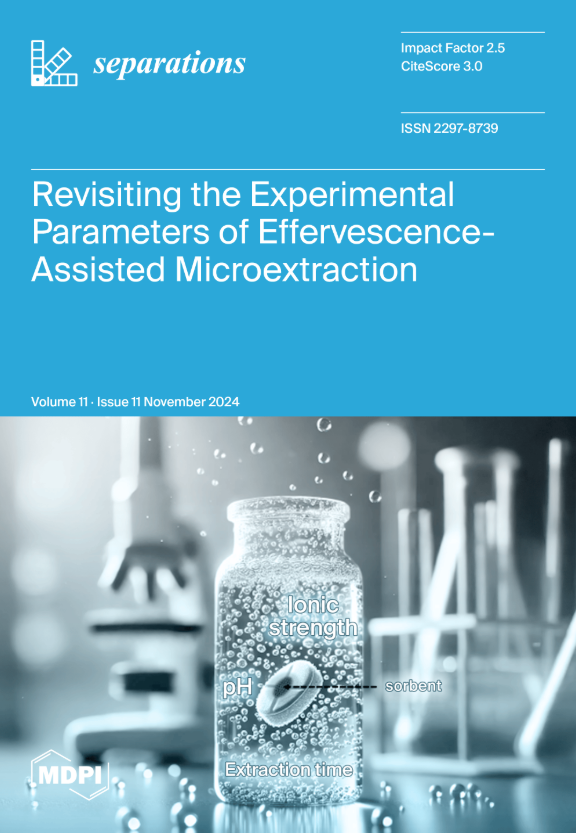气相色谱-质谱联用分析哈萨克斯坦原油生物标志物
IF 2.7
4区 工程技术
Q3 CHEMISTRY, ANALYTICAL
引用次数: 0
摘要
哈萨克斯坦是全球第12大石油生产国,拥有各种各样的原油。本文介绍了一种基于气相色谱-质谱联用技术对哈萨克斯坦西部和南部28种原油进行生物标志物分析的原油类型鉴别方法。生物标志物是有价值的工具,特别是在石油泄漏的法医调查中。这些生物标志物有效地保留了大部分原始天然产物的碳结构,为被检查的油的来源和身份提供了重要的证据。本研究鉴定了一组生物标志物,包括原始烷、植烷、n-C17和n-C18烷烃、藿烷、双去甲藿烷、异共烷、孕烷、雄甾烷、异孕烷、同孕烷、胆甾烷和污名甾烷。通过检测原始烷/植烷、原始烷/正c17烷烃、三环/五环萜烷和藿烷等比值,以及甾烷的分布,推断出来自西哈萨克斯坦的原油具有生物降解的弹性。这些结果表明,气相色谱-质谱法是一种有效的测定石油生物标志物的方法,特别是它提供了高效的分离和鉴定。此外,本研究深入研究了这些油的起源条件和成熟度,有助于更深入地了解它们的特征和分析,这是简单易用的,并且在世界范围内可用。本文章由计算机程序翻译,如有差异,请以英文原文为准。
Analysis of Kazakhstan Crude Oil Biomarkers by Gas Chromatography in Combination with Mass Spectrometry
Kazakhstan ranks as the 12th largest oil producer globally and boasts a diverse range of crude oils. This research introduces a method for distinguishing between the different types of crude oils based on biomarker analysis of 28 crude oils from Western and Southern Kazakhstan using gas chromatography-mass spectrometry. Biomarkers serve as valuable tools, especially in forensic investigations of oil spills. These biomarkers effectively retain a significant portion of the original natural product’s carbon structure, providing crucial evidence regarding the origin and identity of the oils under examination. This study identifies a set of biomarkers, including pristine, phytane, n-C17 and n-C18 alkanes, hopanes, bisnorhopanes, iso-copalanes, pregnane, androstane, allopregnane, homopregnane, cholestane, and stigmastane. By examining ratios such as pristane/phytane, pristane/n-C17 alkane, tricyclic/pentacyclic terpanes, and hopane, as well as the distribution of steranes, it was deduced that crude oils from West Kazakhstan exhibited resilience to biodegradation. These findings showed that gas chromatography-mass spectrometry is an effective method for oil biomarkers determination, especially because it provides efficient separation and identification. Additionally, this study delved into the origin conditions and maturity of these oils, contributing to a deeper understanding of their characteristics and analysis that is simple to use and available worldwide.
求助全文
通过发布文献求助,成功后即可免费获取论文全文。
去求助
来源期刊

Separations
Chemistry-Analytical Chemistry
CiteScore
3.00
自引率
15.40%
发文量
342
审稿时长
12 weeks
期刊介绍:
Separations (formerly Chromatography, ISSN 2227-9075, CODEN: CHROBV) provides an advanced forum for separation and purification science and technology in all areas of chemical, biological and physical science. It publishes reviews, regular research papers and communications. Our aim is to encourage scientists to publish their experimental and theoretical results in as much detail as possible. There is no restriction on the length of the papers. The full experimental details must be provided so that the results can be reproduced. There are, in addition, unique features of this journal:
Manuscripts regarding research proposals and research ideas will be particularly welcomed.
Electronic files and software regarding the full details of the calculation and experimental procedure, if unable to be published in a normal way, can be deposited as supplementary material.
Manuscripts concerning summaries and surveys on research cooperation and projects (that are funded by national governments) to give information for a broad field of users.
The scope of the journal includes but is not limited to:
Theory and methodology (theory of separation methods, sample preparation, instrumental and column developments, new separation methodologies, etc.)
Equipment and techniques, novel hyphenated analytical solutions (significantly extended by their combination with spectroscopic methods and in particular, mass spectrometry)
Novel analysis approaches and applications to solve analytical challenges which utilize chromatographic separations as a key step in the overall solution
Computational modelling of separations for the purpose of fundamental understanding and/or chromatographic optimization
 求助内容:
求助内容: 应助结果提醒方式:
应助结果提醒方式:


